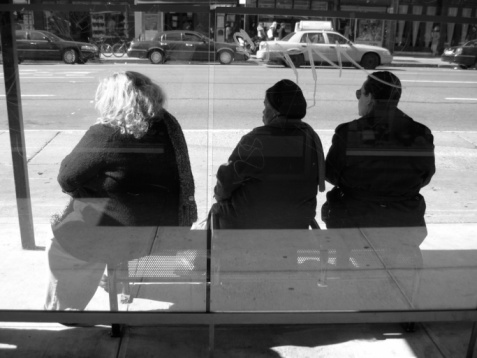Access to public transportation is what policy types call a "social determinant of health" or SDOH. Health is about much more than health care, than simply seeing a doctor.
Now, in a new study, the Alameda County Public Health Department documents the link Ervin has experienced between health and access to reliable public transportation.
In the report, Getting on Board for Health, health department representatives surveyed transit-dependent riders in Alameda County. The Bay Area as a whole has experienced an 8 percent cut to bus service between 2006 and 2011.
“We found among the transit dependent riders we surveyed, more than 8 in 10 say they have more difficulty getting to their jobs, social activities, school or doctors office,” says study co-author Rebecca Flournoy. “And we know this is problem from public health" studies (for example, this one).
Flournoy, the deputy director for planning policy and health equity at the Alameda County Public Health Department says the health impacts include cumulative effects of stress and social isolation, as well as missed doctors care.
And Devilla Ervin is not alone. There are about 2 million Bay Area residents who do not have a car and are transit dependent.
The survey included 477 transit-dependent riders in Alameda County. Nearly two-thirds reported longer wait times as a result of service cuts, one-third said they had longer commutes, and about one in ten said they didn’t see friends or family as frequently. About 6 percent -- mostly seniors and people with disabilities -- reported less access to health care appointments.
Sheela Gunn-Cushman, a member of the Disability Action Network of Hayward, is blind and relies on buses to get around. She says there’s a clear link for her between health and transit.
“When the buses don’t run, neither do we. That means we can’t work, play, socialize things like that. And we can’t get jobs and keep jobs and and go to doctors appointments and be human,” says Gunn-Cushman.
“A lot of these residents really build their daily lives around where, when and if public transportation is available,” says study co-author Flournoy.
While other transportation studies have explored public transit health impacts in terms of physical activity, traffic safety, and air quality this is one of the first of its kind to focus on health benefits from improving transportation access.
The county health agency released the report now in hopes of influencing the draft Plan Bay Area which will go before the Metropolitan Transportation Commission (MTC) for a vote in July. The long-term plan helps determine the allocation of $289 billion in regional transportation spending over the next 27 years.
One option for the MTC's plan includes maintaining public transportation funding at current levels. The Alameda report advocates for a different option called the “Equity, Environment and Jobs” alternative. This approach would invest more funding into services, including bus transit around the region.
